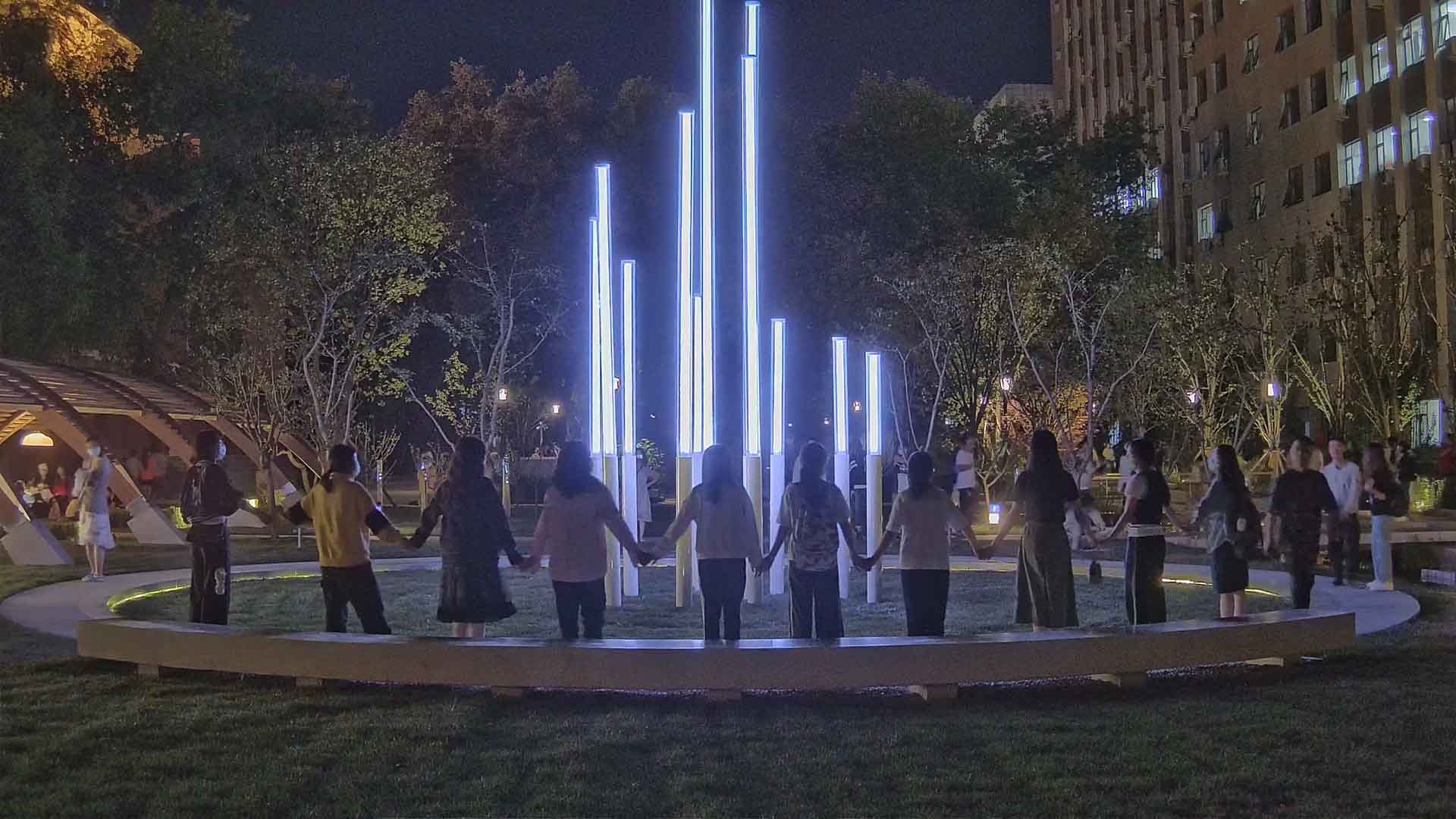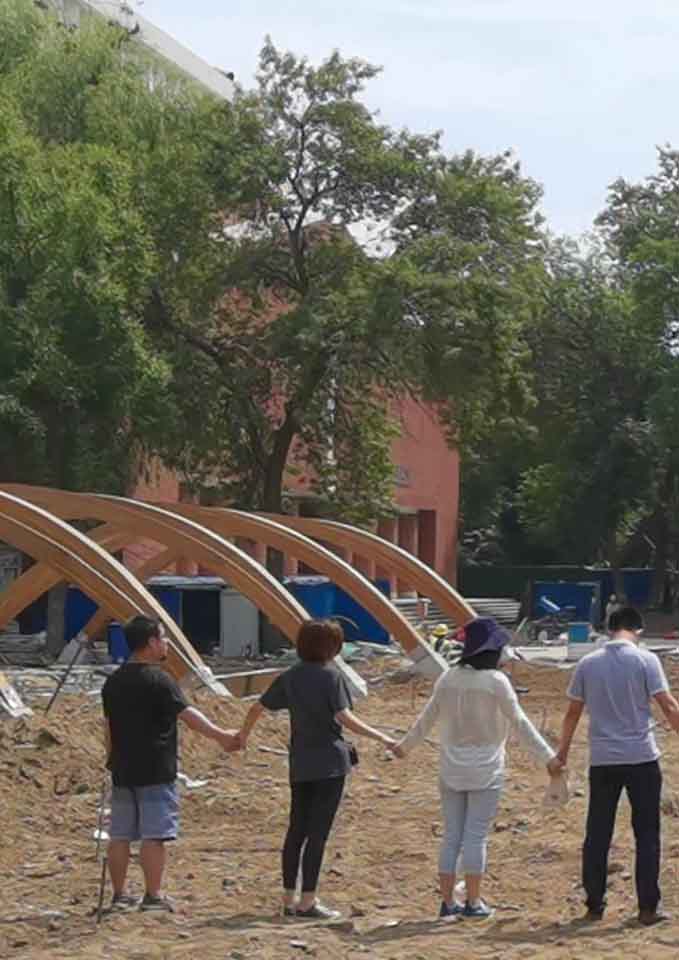

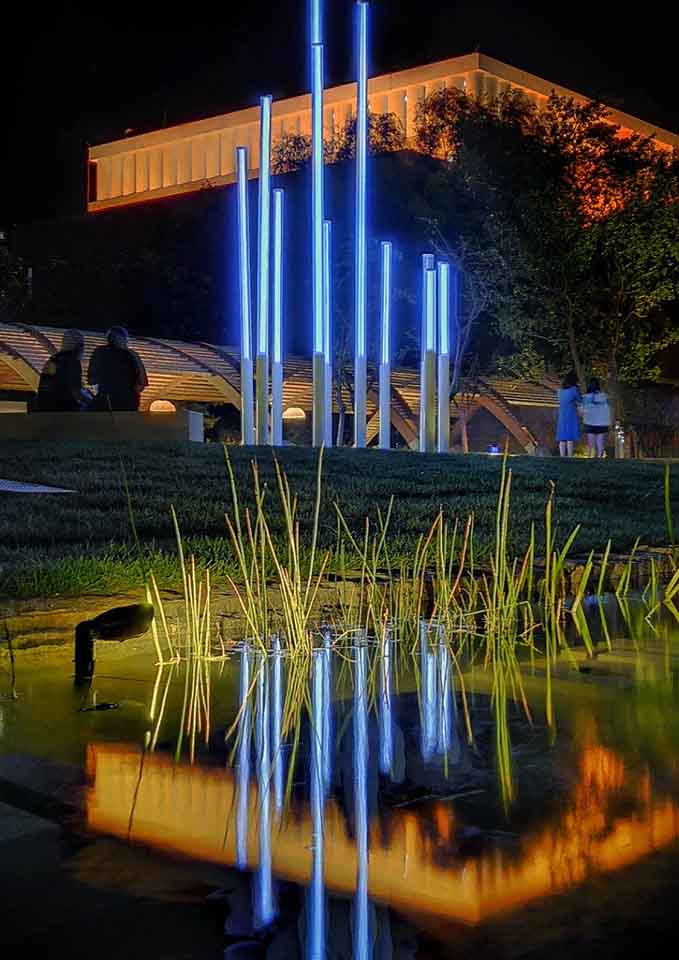
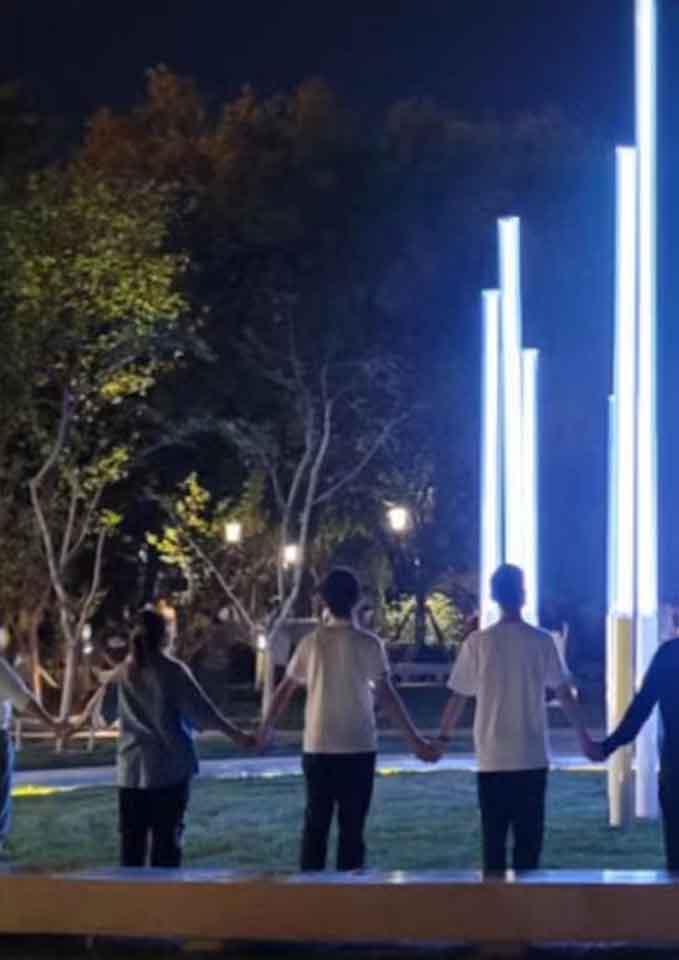
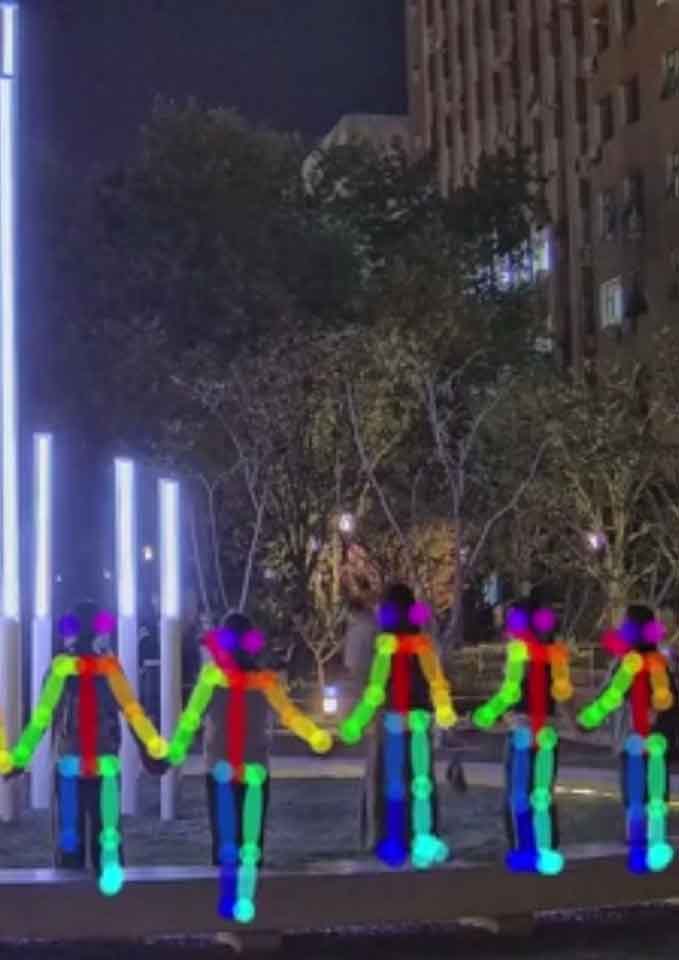
ILLUMINATE CONNECTIONS: A SYMPHONY OF LIGHT AND COMMUNITY
From 2020 to 2021, a public lawn in Beijing Forestry University campus became the site of an acedemic experimental interaction projcet: "The Heart of Forest". This installation used a surveillance camera to trigger a light display when groups of ten or more people held hands in line. This project was my first collaboration with the algorithm team. Witnessing firsthand the potential of computer vision prompted a pivotal shift in my focus, steering me towards harnessing this technology for evaluating tourist's behavior and developing innovative interactions for the community.
Interaction Design
- Date: 2020 JUN-JUL
- Type: Interaction Design
- Role: Research & Design
- Description: In this stage, we sought group behaviors that promote unity and are detectable by computer vision, alongside designing light and sound effects, to enrich the communal experience.
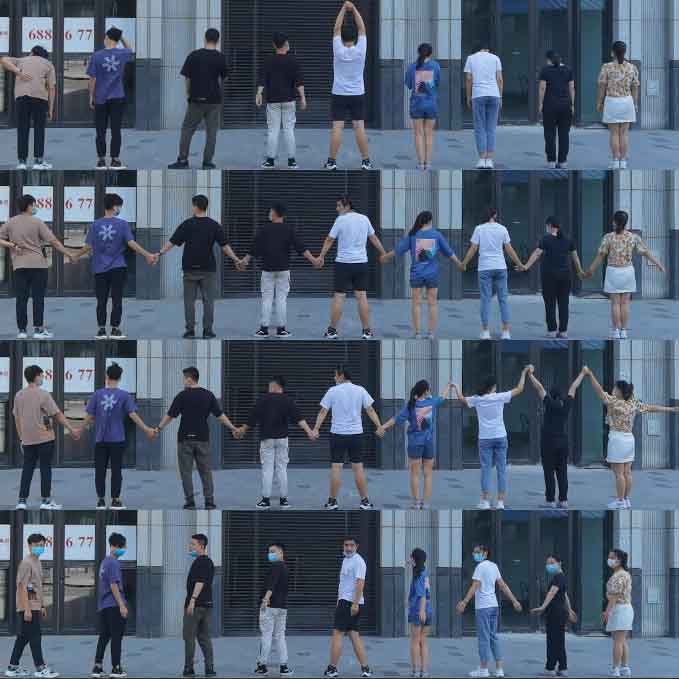
Background
In current digital age, students' lives are predominantly confined indoors, with screens and keyboards dominating communication and leisure, shifting their interactions to a virtual relm. There is a growing need to attrack them back into the physical world. The primary objective are 1. To create an outdoor space that attracts students to engate collectively; 2. breaking down the barriers of real-world interaction; 3. Crafting an experience that is not only compelling but also emerging as a community topic among students.
Community Engagement
After exploring a wide range of behavioral research to identify suitable group activities, we found that jointing hands in a line emerged as the most fitting form of activity. This led us to a series of meticulous tests aiming at optimizing the experience both for the participants and the algorithm. We experimented the ideal number of participants required to trigger the light show and, the ways of how participants would be holding their hands. An important aspect of our research was assessing the spatial requirements for the activity - how much space the participants would occupy, and how this behavior could integrate seamlessly into the surounding environment. This detailed experimentation was crucial in refining our interactive installation, ensuring it was both feasible and enjoyable for students to participate in.
For the light show part, given the lack of existing research or comparable projects on the specific impact of lighting patterns on visitors, we opted for a straightforward approach. Leaving behind the complex thematic support, six aesthetically pleasing light patterns were designed. As a result, our observation and feedback indicated that, for the students involved, the significance laid much less in the specific patterns of the light show than in the act of triggering it.
This result potentially unveiled an important aspect in the interactive project: the value of interactive engagement over the intricacies of the visual display.
Production & Construction
- Date: 2020 AUG-SEP
- Type: Production & Construction
- Role: Designer & Management
- Description: As Head of Hardware Product, I led our team in a critical phase, collaborating closely with the Embedded Development team. We focused on structural design, simulation, and rigorous material testing, facing the challenges of tight timelines and delayed testing schedules.
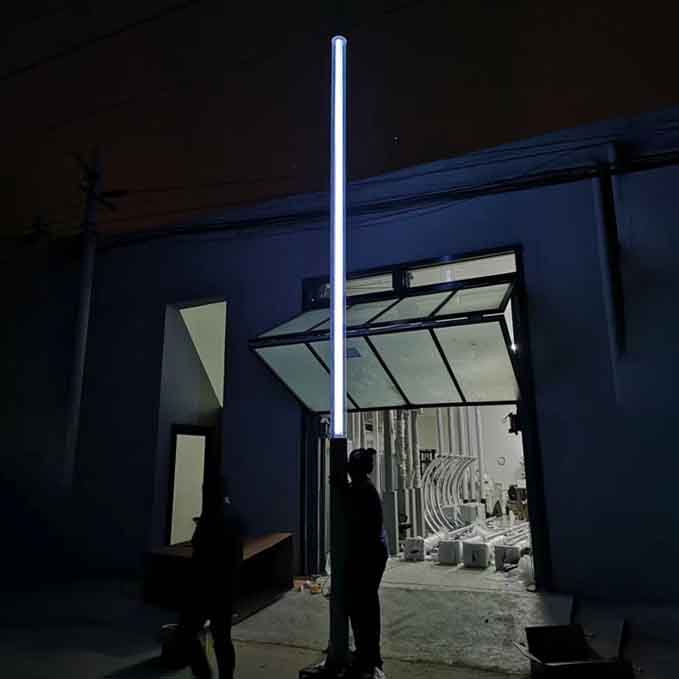
Production & Construction
This phase concentrated on the intricate aspects of structural design and simulation, alongside production and material testing. Since the highest pillar extends over 7 meters above the surface. Despite the heavy workload, our project timeline was incredibly tight, leading to the first setup test being conducted merely a day before the installation. However, the Embedded Development team significantly delayed their testing, only initiating their tests a week after the pillars had already been set up on the campus lawn.
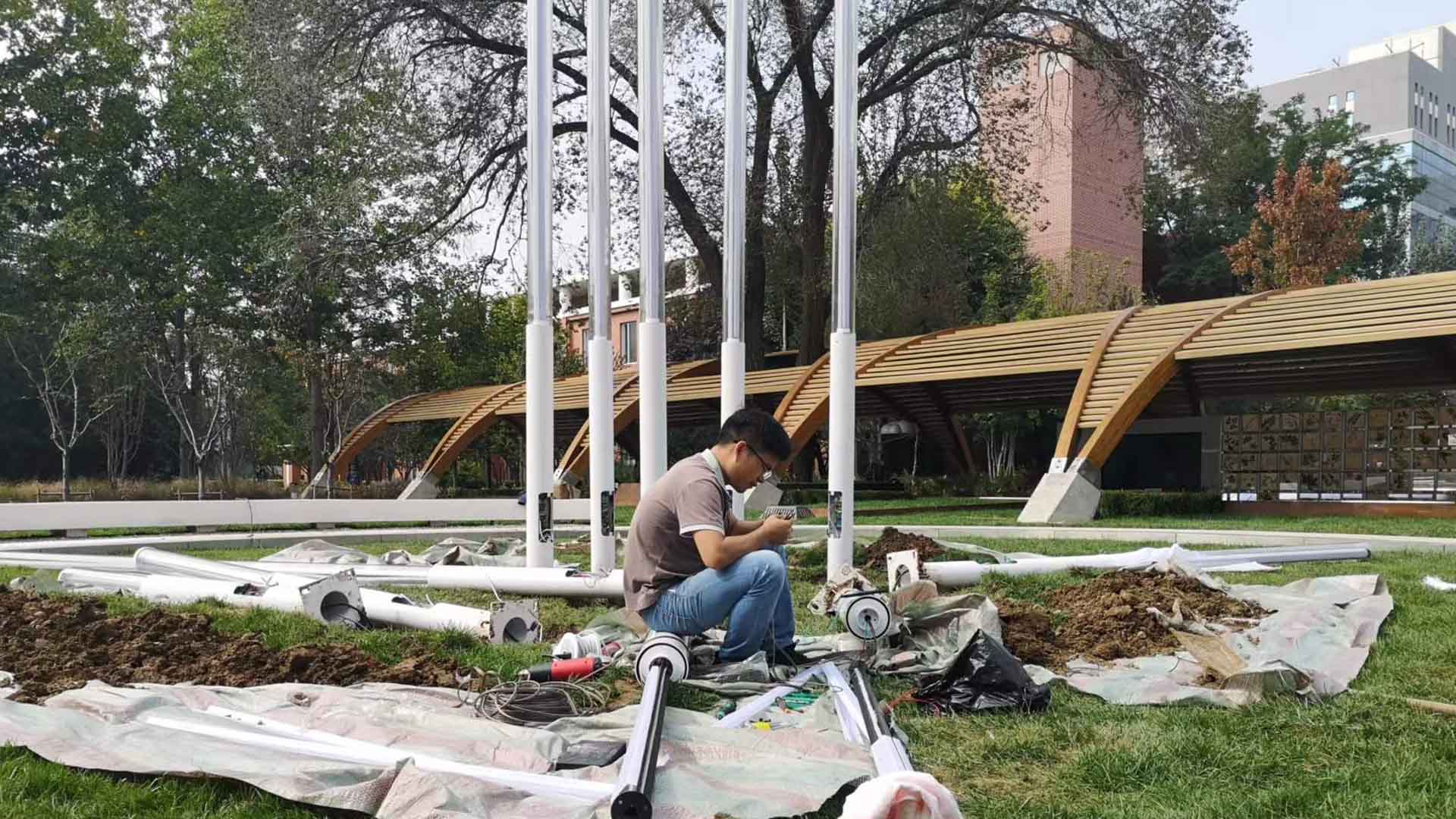
Follow up:The next 10 months were marked by continues programing testing failure. 2 months after the installation, due to a series of office politics, I transitioned from Head of Hardware Product to a developer role in the algorithm department. 10 months after the installation, I was tasked with establishing the 'Art Customizing' department, and the entire project, in a state of disarray, was handed over to me.
Hardware Reformation
- Date: 2021 JUL-AUG
- Type: Reformation Project
- Role: Whole Stack
- SoftWare: UE4; LED Controller
- HardWare: LED Controller; Workstation
- Description: After taking charge of this installation, I overhauled the entire control system. This involved replacing existing components, implementing efficient LED controllers, and integrating a server-based system to reduce the complexity thus enhance the stability.

Hardware Reformation
To revitalize the "Heart of Forest", I initiated a complete overhaul of both its hardware and software control system. The first task was a thorough examination of the pillars, assessing the condition of light strips, boards, and circuits.The next crucial step involved upgrading the LED controllers. By intergrating one server with two H801RC LED controllers, I achieved remote control of the light strips over a 60-meter distance with existing ethernet cables. The majority of the following work was unfolded on-site: removing the control boards, replacing any damaged strips, and applying foam sealant to prevent moisture seepage from the base. Then the server and controllers were installed into the central cabinet.
A simple Unreal Engine 4 program was deployed on the server, designed to play a video in response to specific signals from the master control unit. Otherwise, it constantly maintained a pure light-blue. This system reformation not only restored the installation but significantly enhanced its stability by greatly reducing control units.
Algorithm Deployment
- Date: 2021 SEP
- Type: Algorithm Depolyment
- Role: On Site Test
- Description: In this final stage, my role focused on integrating hand-jointing detecting algorithm with other departments, leading to smooth on-site tests and an initial surge of student engagement with the interactive light show.
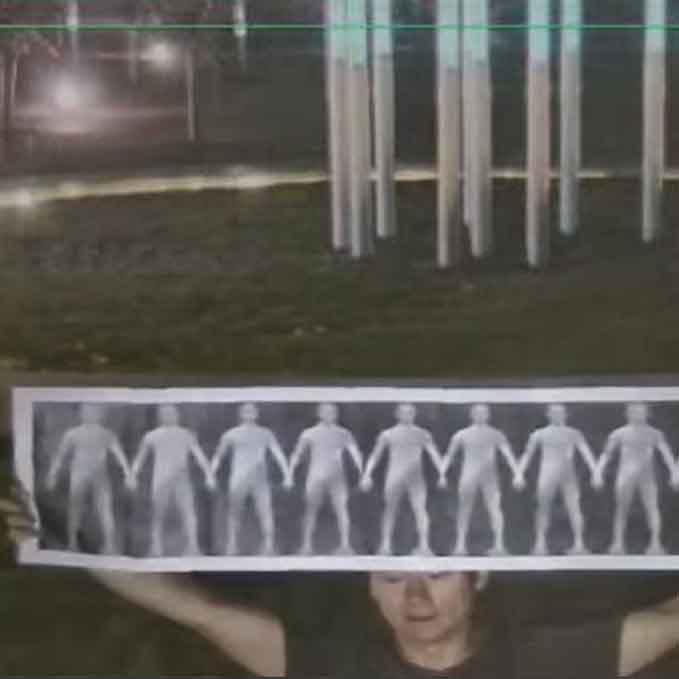
Final Deployment
The concluding phase of this research project run with relative ease. As a new member of the algorithm team, my primary responsibility was to streamline integration with other departments. We initially conducted on-site tests using printed figures of various jointing hands. After this, we invited groups of students to holding hands to trigger the light show. This collaborative approach successfully transformed the installation into a popular gathering space, drawing students out of their indoor environments. It demonstrated the power of shared experiences in fostering a sense of belonging and creating community-driven conversation.
Despite this initial success, interest faded about six months later, with few groups coming to trigger the light show. This decline in engagement offered valuable insights into the transient nature of such interactive installations and the challenges in maintaining long-term public interest.
